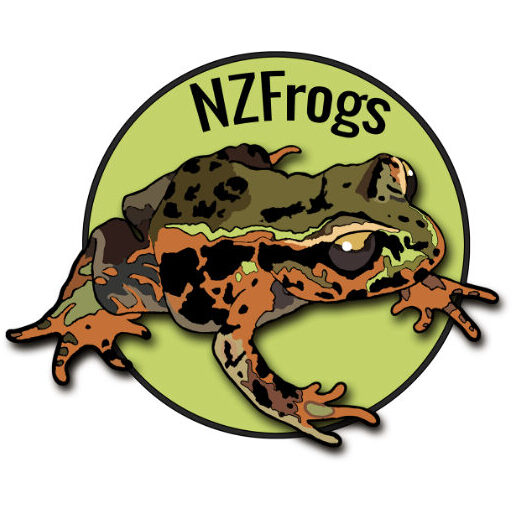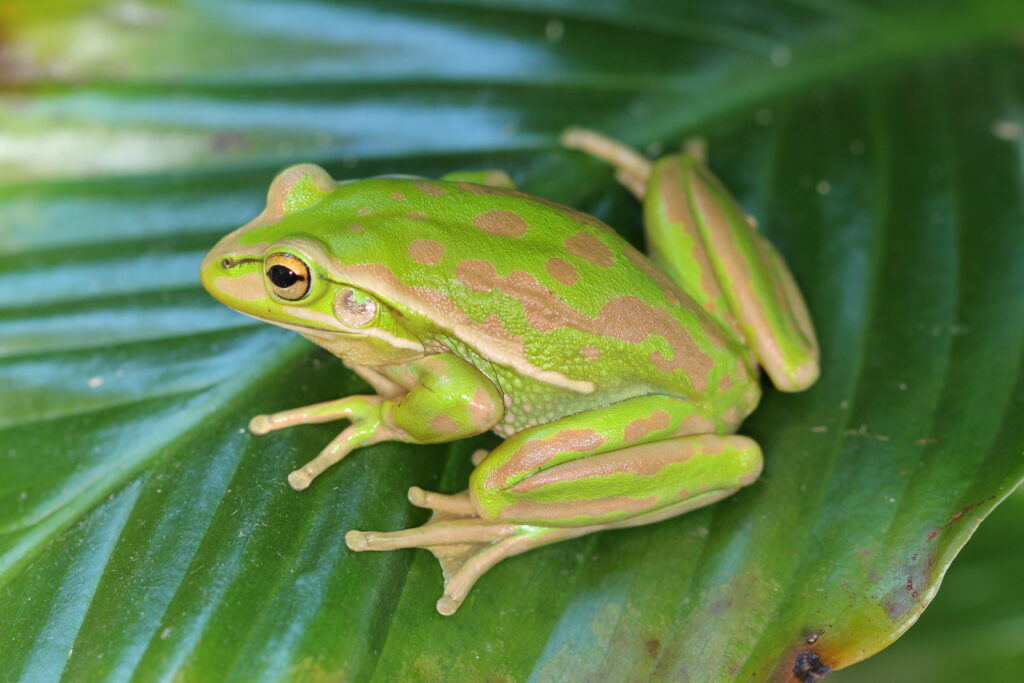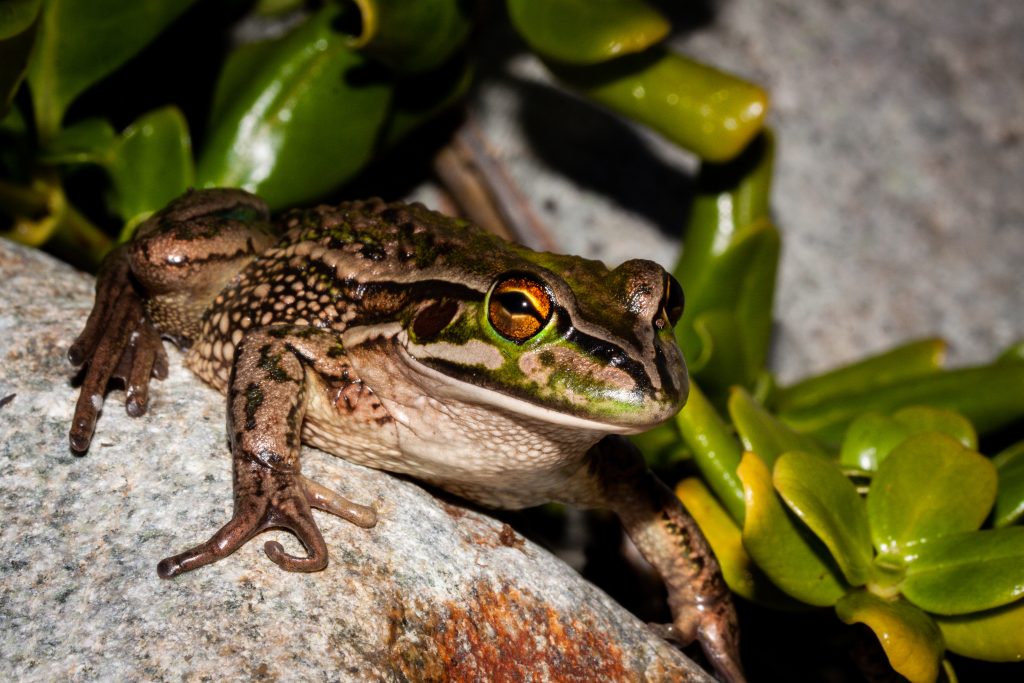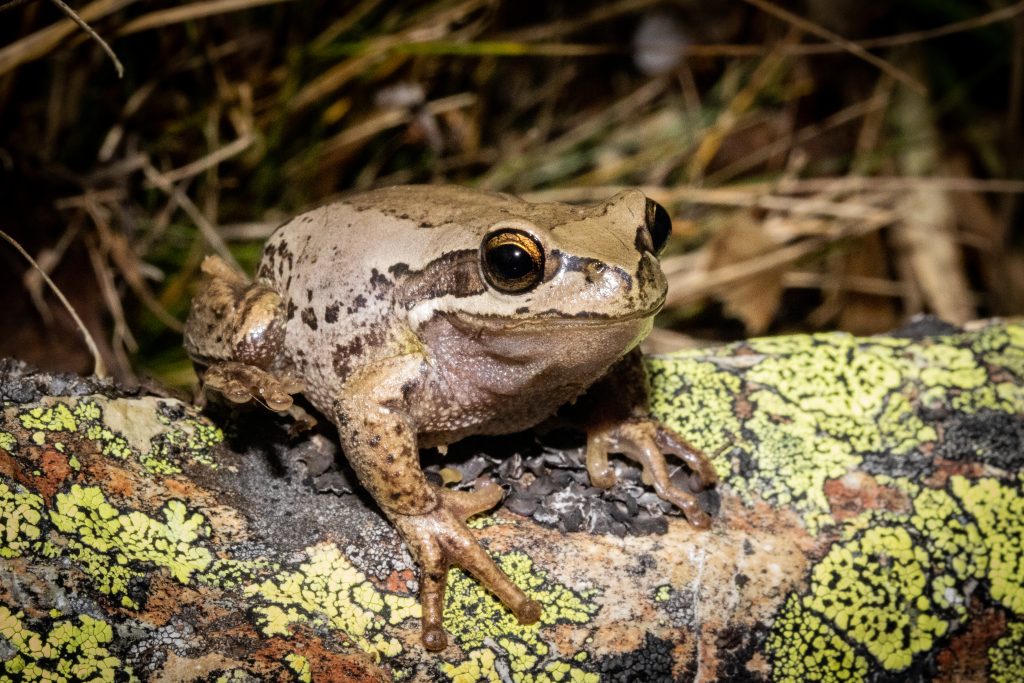At least eight species of frogs were released into New Zealand in the mid to late 1800s however, only three of these species established populations that persist today. These are all tree frogs in the super-diverse family Hylidae. Our introduced frogs are fairly easy to distinguish from the New Zealand native species because they are all much larger and produce characteristic calls.
Other Amphibians
There are four species of Urodela present in New Zealand. Only one species, the alpine newt, is found in the wild. MPI (Ministry for Primary Industries) and the Department of Conservation are trying to eradicate this invasive pest because of their threat to native wildlife including frogs. Fire-bellied newts and axolotls are common pets with no wild populations.
Fire-Bellied Newts
Fire-bellied newt
Both the Japanese fire-bellied newt and Chinese oriental fire-bellied newt species are becoming increasingly common in captivity, being popular as pets. Fire-bellied newts are easy to identify with a bright red abdomen and dark brown to black dorsal surface, growing to about 10cm length.
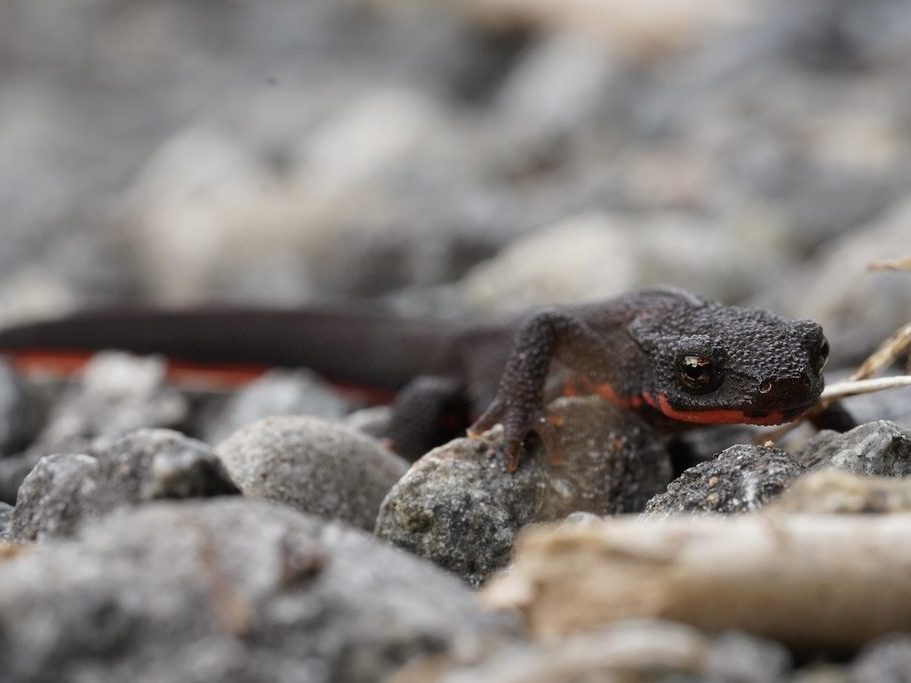
Image by ©konosita
Alpine Newt
Alpine newt
The alpine newt was illegally introduced to New Zealand and first reported in 2013. Alpine newts have an orange abdomen and variations of bright blue, white or silver spots, or bands on the side of its body. Alpine newts established in the western Bay of Plenty, in close proximity to Archey’s and Hochstetter’s frog populations. Efforts to eradicate this population are being made to prevent any wider ecosystem damage they may cause.

Image by ©Paul Cools
Axolotl
Mexican axolotls
Sold widely in the pet trade throughout New Zealand, axolotls are ferocious predators that would be a serious threat to native invertebrates and fish if they were to escape from captivity. A wild axolotl population was established in 1987 after six individuals were released. This wild population was eradicated in the 1990’s. Axolotls are a type of salamander that are paedomorphic, meaning adult animals retain juvenile traits.
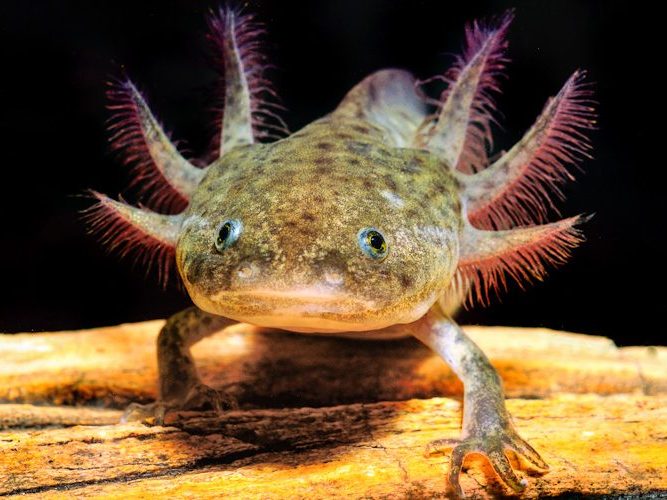
Image by ©2012 John P. Clare
If you have seen any of these introduced newt species in the wild make sure to report your sighting to MPI

Unsuccessful introductions
Acclimatisation societies were active in New Zealand during the 1800s, aimed to naturalise all manner of non-native species, especially those from Europe. These societies thought that native New Zealand ecosystems were somehow ‘less-evolved’ and ‘barren.’ Misinterpreting Darwin’s theory of evolution, they believed New Zealand’s native species were doomed to go extinct and should be replaced by superior exotic species. There were quite a number of amphibian species released into New Zealand which were not able to establish populations and it is presumed that these animals died out. In addition to the three naturalised species, there are at least five other frogs which are known to have been released into New Zealand. Although none of the following frog species appear to have ever established, there is always a risk of continued incursions from non-native frog species, especially from illegal pet trade.
Thirty common frogs (Rana temporaria) were introduced from England to Canterbury in 1864. Common frogs failed to establish, supposedly the last common frog, which resided at the Christchurch acclimatisation gardens, was swallowed by a swan.
At a similar time, there were also attempts to introduce the common toad (Bufo bufo). Two attempts were made, the first introduction was made in the late 1860s and again in the 1890s however, both failed to establish.
The edible frog (Pelophylax esculentus) is similar in appearance to the common frog. It was introduced from Europe to the Nelson area in the 1860s “with the idea of providing food for wild ducks.” They also failed to establish.
The Australian green tree frog (Litoria caerulea) was introduced from Sydney and Hobart Australia to New Zealand in 1897 and 1899. They were released at several sites in Auckland and Canterbury, in addition to an accidental import in the 1940s. The Australian green tree frog has not been seen since the 1950s, and it is assumed that they did not establish.
The Australian eastern banjo frog or pobblebonk frog (Limnodynastes dumerilii) named for its distinct pobble-bonk call was reported in 1999 after unusual tadpoles were discovered in the Waitakere Ranges. An intense survey was conducted in November 1999 and all individuals found were eradicated. No further evidence of these frogs has been found.
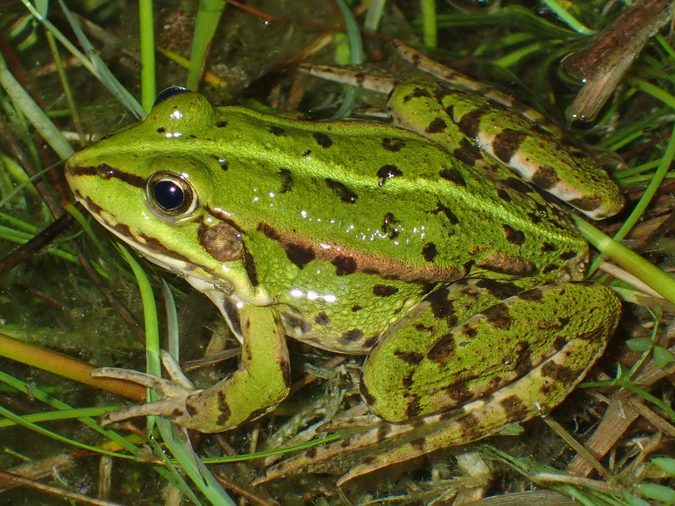
©Maciej Bonk
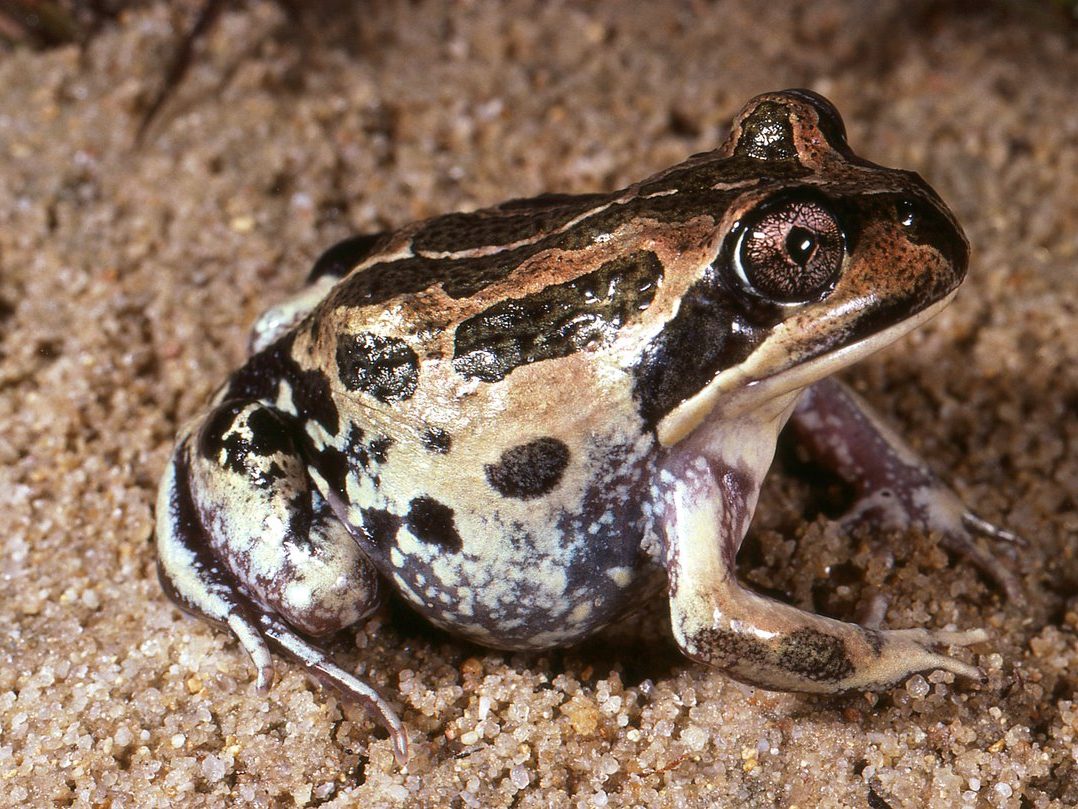
©Australian Museum
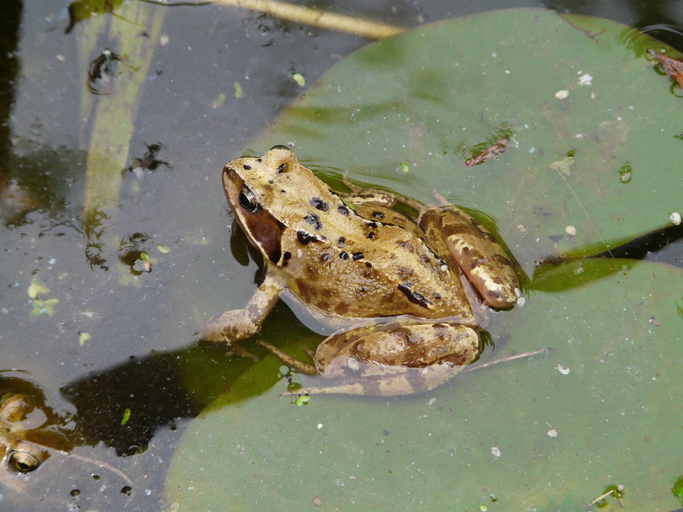
©Simon Tonge
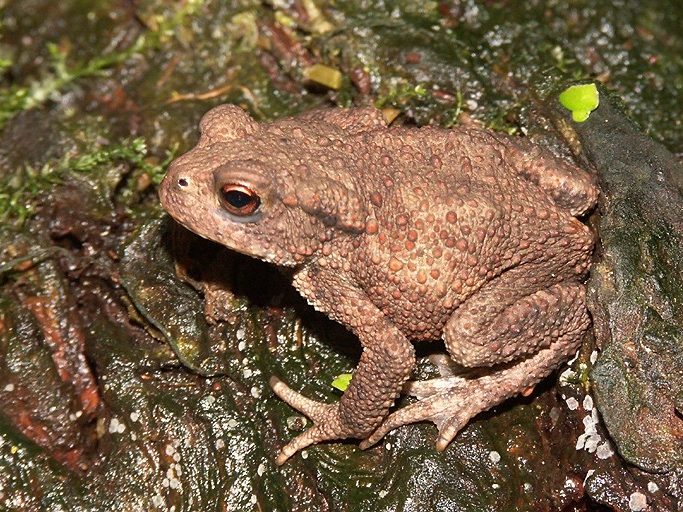
©Henk Wallays
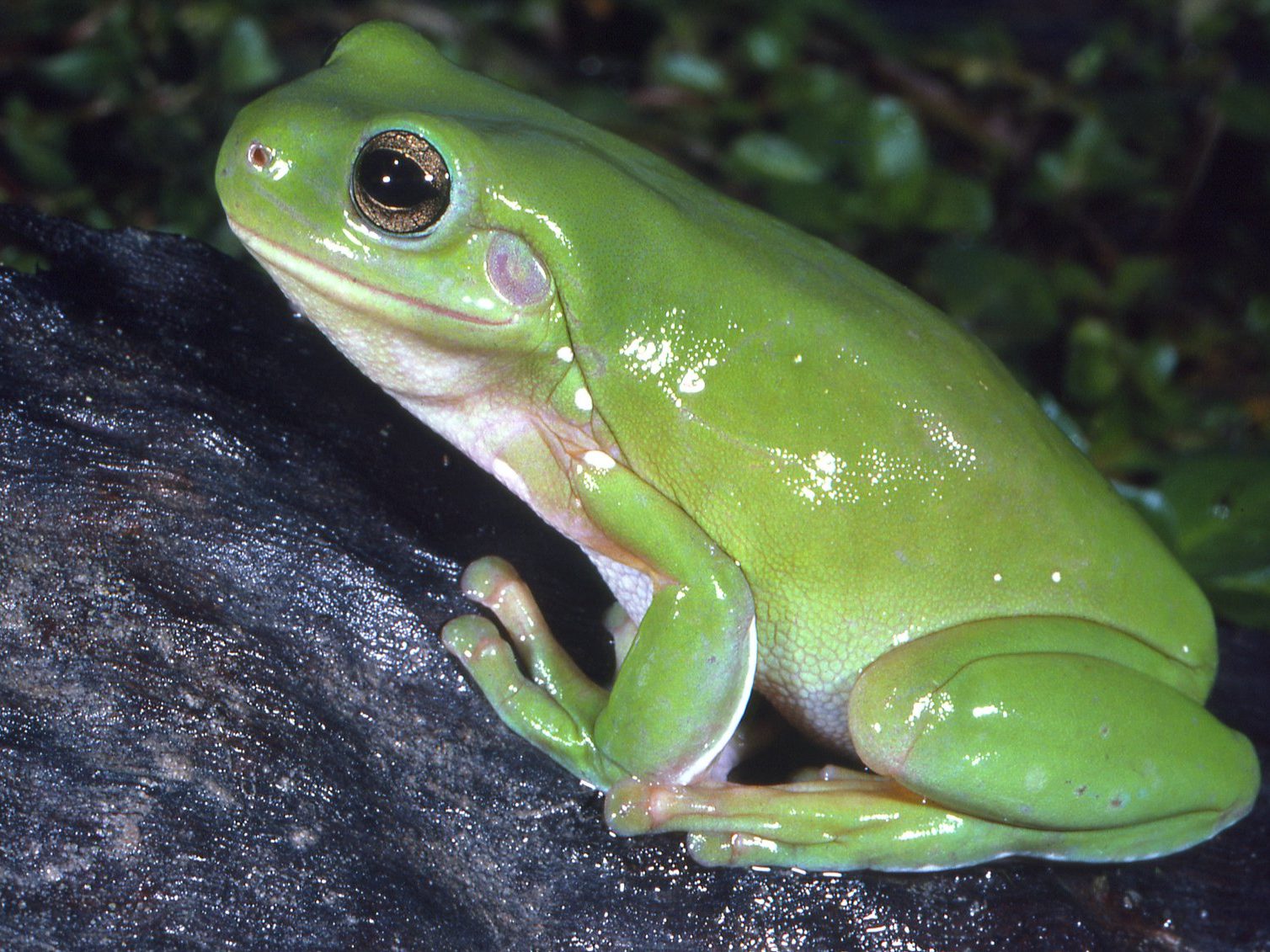
©Australian Museum
References
Bishop, P. (2008). Bell frog populations in New Zealand-good news or bad news?. Australian zoologist, 34(3), 408-413.
Bell, B. D. (2016). A review of potential alpine newt (Ichthyosaura alpestris) impacts on native frogs in New Zealand. Journal of the Royal Society of New Zealand, 46(3-4), 214-231.
Burns, Rhys J., et al.(2017) Conservation status of New Zealand amphibians. Wellington: Publishing Team, Department of Conservation, 2018.
Burns, R. J., et al,. (2018). Conservation status of New Zealand amphibians, 2017. Wellington: Publishing Team, Department of Conservation.
Cree, A. (1984). Breeding biology, respiration, and larval development of two introduced frogs (Litoria raniformis and L. ewingi). New Zealand Journal of Zoology, 11(2), 179-187.
Druett, J. (1983) Exotic intruders. Heinemann. Ch13, 252.
Hero, J., Gillespie, G., Lemckert, F., Littlejohn, M., Robertson, P., Brereton, R. & Brown, P. 2004. Litoria raniformis. The IUCN Red List of Threatened Species 2004.
IUCN SSC Amphibian Specialist Group. 2020. Cynops orientalis. The IUCN Red List of Threatened Species 2020
Jean-Marc Hero, Graeme Gillespie, Harold Cogger, Frank Lemckert, Peter Robertson. 2004. Litoria aurea. The IUCN Red List of Threatened Species 2004.
McCann C. (1962). What Frogs Were These? [Response]. Tuatara. 9(3):128–129.
Norman, G. (2018). Bird Stories: A history of the Birds of New Zealand. Putton and Burton.
Otani, S., & Duensser, E. (2020). English translation of the original description of Cynops pyrrhogaster Boie, 1826. Alytes, 37(22-24)
Pili, A. N., Tingley, R., van Winkel, D., Maria, L., & Chapple, D. G. (2023). The escalating global problem of accidental human-mediated transport of alien species: A case study using alien herpetofauna interceptions in New Zealand. Biological Conservation, 278.
Pyke, G., & White, A. (2001). A review of the biology of the green and golden bell frog Litoria aurea. Australian Zoologist, 31(4), 563-598.
Pyke, G. (2002). A review of the biology of the Southern Bell Frog Litoria raniformis (Anura: Hylidae). Australian Zoologist, 32, 1, 32-48.
Stuart, S.N., et al.(eds.) (2008). Threatened Amphibians of the World. Lynx Edicions, Barcelona, Spain; IUCN, Gland, Switzerland; and Conservation International, Arlington, Virginia, USA. Ch1(5).
Thomson Hon. G. M. 1920. Wild Life in New Zealand. Otago Witness, Issue 3434,61.
Thurley, T., & Bell, B. D. (1994). Habitat distribution and predation on a western population of terrestrial Leiopelma (Anura: Leiopelmatidae) in the northern King Country, New Zealand. New Zealand journal of zoology, 21(4), 431-436.Whitaker, T., & Bejakovich, D. (2000). Exotic frog incursion. Surveillance, 27, 12-14.
